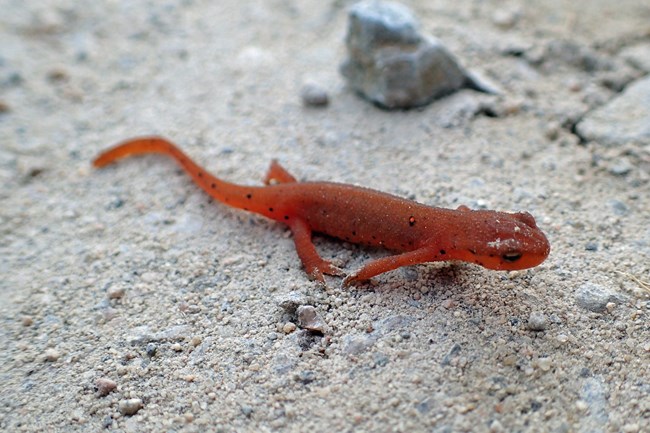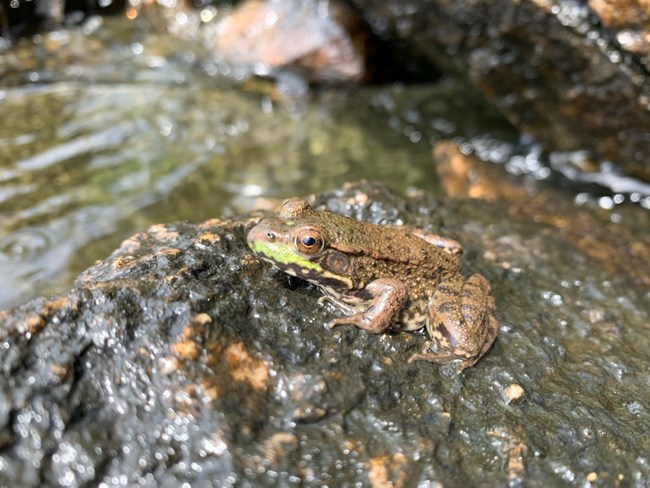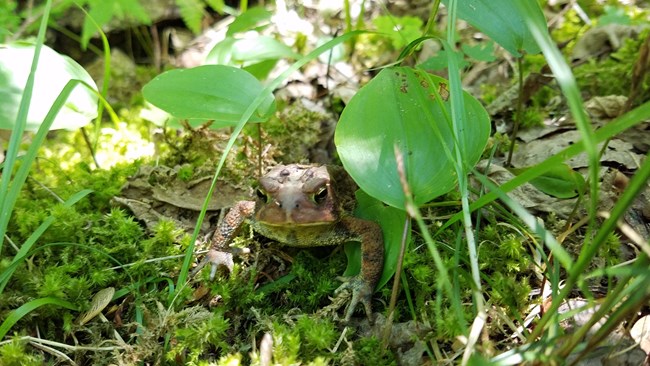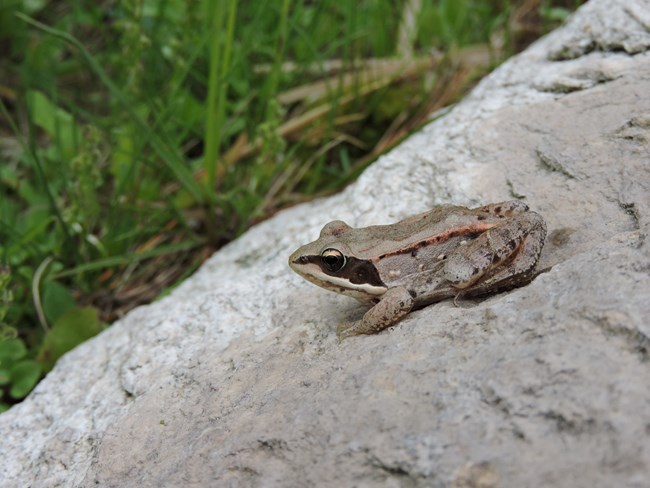|
As a water-based park, Voyageurs National Park supports many types of wetlands, such as sphagnum-peat bogs, wooded swamps, and marshes. These wetlands, along with the many lakes that make up Voyageurs National Park, provide the habitat that amphibians need to survive and reproduce. This wide array of aquatic habitats is ideal because all amphibians rely on water at some point during their lifetime. 
NPS Amphibians In The Park

NPS Sensitive GroupAmphibians are sensitive to changes in their environment due to the fact that their skin is more permeable than ours, so while water and oxygen can pass through their skin, so can other chemicals, including ones detrimental to their health. This is one reason amphibian populations are on the decline around the world. Because amphibians are so sensitive to changes in their environment, they are an ideal group to study to determine if there is anything wrong in the environment. By monitoring amphibian populations, scientists are able to detect when environmental changes occur. 
NPS Research EffortsVoyageurs National Park currently has research and monitoring underway with various partners to study amphibian populations, including amphibian song monitoring. These collaborative efforts will help scientists to: 
NPS Amphibians and YouWant to help scientists monitor and track amphibians in the park? It’s easy! All you need is a smartphone with a camera and/or a microphone and an account with herpmapper.org! If you see any amphibians in the park, simply take a photo with your phone and upload it to herpmapper. If taking photos isn’t an option, you can also make a recording of their song and upload that to herpmapper. If you do not know the species that you have, you can still upload your data and other members can identify it for you. Your contributions help scientists to monitor population sizes, species, and breeding seasons. Even the most common of species is useful data to upload! So what are you waiting for? Get out there and help contribute to science while enjoying nature! |
Last updated: January 30, 2023
